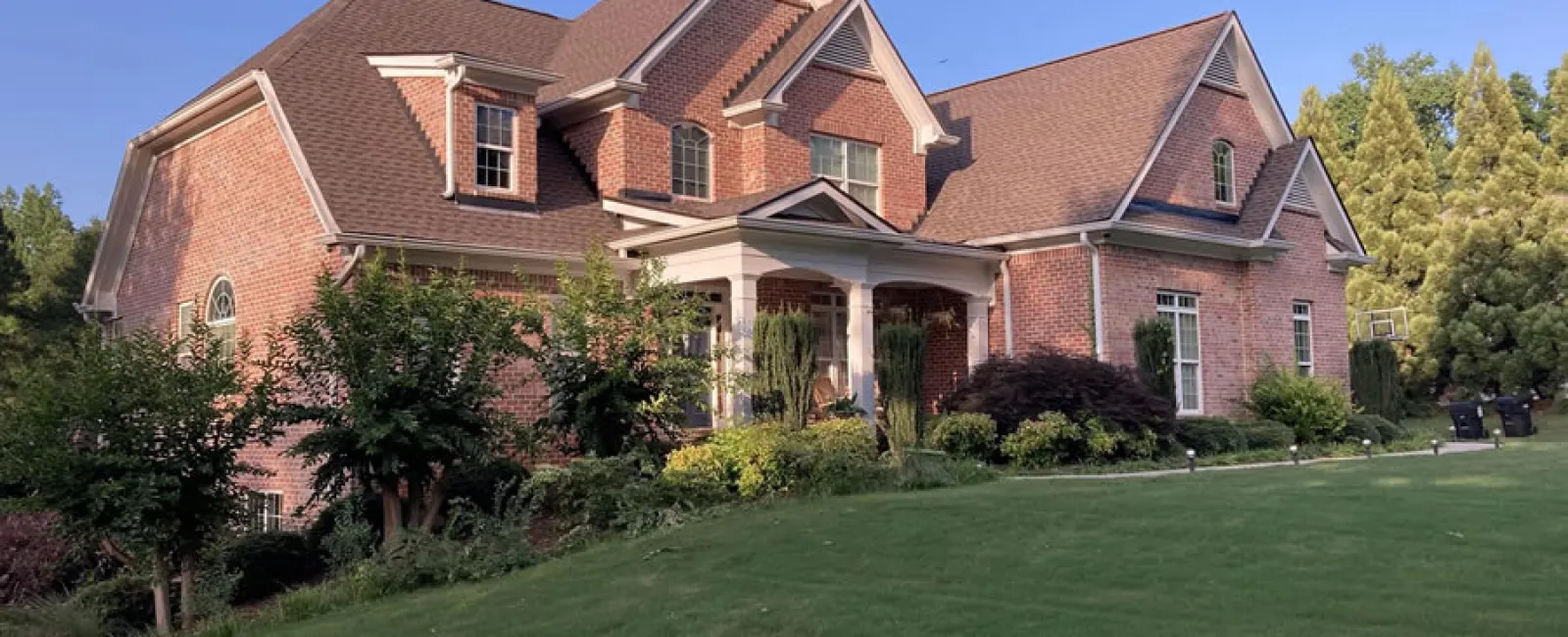The roof, or the crown of your home, is a critical component protecting the building’s structure, its occupants, and possessions therein from the relentless forces of nature. Roofs come in a myriad of styles, materials, and designs, each tailored to serve a specific purpose and aesthetic. In this article brought to you by FGA Roofing, we look at the three most common types of roofs: Asphalt Shingle, Metal, and Tile. We will explore their description, advantages, and drawbacks to help you make an informed choice when it comes to roofing your home.
If you are looking for a reputable roofing company, then call FGA Roofing to hire uniformed roof installers. We have you covered with everything from a quick roof repair to a complete roof replacement. Our team is on standby for your questions or concerns.

Asphalt Shingle Roofs
Asphalt shingle roofing stands as probably the most prevalent and widely used roofing options in the United States. It features a layered composition consisting of fiberglass or organic felt matting saturated with asphalt and topped with mineral granules. These shingles are available in various shapes, colors, and styles, making them highly versatile in adapting to different architectural aesthetics.
Advantages of Asphalt Shingle Roofs:
- Affordability: Asphalt shingles are a cost-effective roofing option, making them a popular choice for budget-conscious homeowners.
- Ease of Installation: Roofers find asphalt shingles relatively easy to install, which can lead to reduced labor costs.
- Wide Variety: With a vast array of styles and colors, asphalt shingles allow homeowners to achieve the desired look for their homes.
- Durability: While not as durable as some other roofing materials, asphalt shingles can still offer good protection for 20-25 years, with proper maintenance.
- Repairability: Individual damaged shingles are easily replaceable, and repairs are usually straightforward.
The Drawbacks of Asphalt Shingle Roofs:
- Limited Lifespan: Asphalt shingles have a shorter lifespan compared to other roofing materials, typically lasting 20-25 years.
- Susceptible to Weather: Extreme weather conditions, such as heavy winds, hail, or rapid temperature fluctuations, can cause damage to asphalt shingles.
- Environmental Impact: Asphalt shingles are not the most environmentally friendly choice, as they are petroleum-based and contribute to landfill waste.
Metal Roofs
Metal roofing offers an aesthetically pleasing and highly durable roofing option. This type of roof consists of metal panels or shingles, typically made of steel, aluminum, copper, or zinc. It's available in various styles, including standing seam, corrugated, and metal shingles, providing versatility in design.
Advantages of Metal Roofing:
- Exceptional Durability: Metal roofs can last 40-70 years or more, making them one of the longest-lasting roofing materials available.
- Low Maintenance: They require minimal maintenance and are highly resistant to pests, rot, and mildew.
- Energy Efficiency: Metal roofs often reflect sunlight, reducing heat absorption and helping to lower cooling costs.
- Weather Resistance: Metal roofs excel in harsh weather conditions, including resistance to wind, rain, hail, and snow.
Drawbacks of Metal Roofing
- Higher Initial Cost: The upfront cost of metal roofing is often higher than asphalt shingles or other materials, though the long-term durability may offset this.
- Noise Level: Without proper insulation, rain or hail can create noticeable noise on metal roofs, which can be a drawback for some homeowners.
- Expansion and Contraction: Metal roofs expand and contract with temperature fluctuations, which may require appropriate installation techniques to prevent issues.
Tile Roofing
Tile roofing is renowned for its elegance and timeless aesthetic. It comes in two primary materials: concrete and clay. The tiles are available in various profiles, including flat, low-profile, and high-profile shapes, and an array of colors to complement a wide range of architectural styles.
Advantages of Tile Roofing:
- Aesthetic Appeal: Tile roofs exude a classic, upscale appearance that can significantly enhance the curb appeal and value of a home.
- Durability: Both concrete and clay tiles offer remarkable longevity, with lifespans that can reach 50-100 years.
- Fire Resistance: Tile roofing is highly fire-resistant, providing an additional layer of protection to homes in fire-prone areas.
- Sustainability: Clay and concrete tiles are often made from natural materials and can be recycled, contributing to sustainability.
- Low Maintenance: These roofs require little maintenance beyond periodic inspections.
Drawbacks of Tile Roofing:
- Weight: Tile roofing is heavy, requiring proper structural support. Homes may need reinforcement to accommodate the additional load.
- Cost: Tile roofs can be quite expensive, both in terms of materials and installation. However, their longevity may justify the investment.
- Fragility: Walking on tile roofs can cause damage, and individual tiles can be fragile, requiring care during maintenance or repairs.
- Complex Installation: Proper installation is crucial, and it's typically more complex and time-consuming than some other roofing types.
